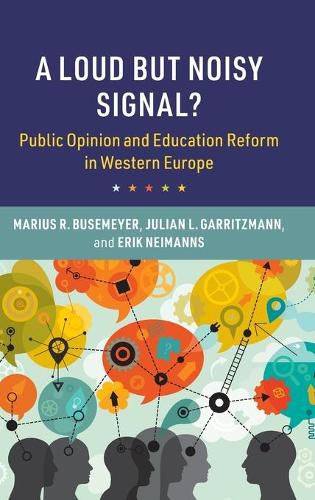Readings Newsletter
Become a Readings Member to make your shopping experience even easier.
Sign in or sign up for free!
You’re not far away from qualifying for FREE standard shipping within Australia
You’ve qualified for FREE standard shipping within Australia
The cart is loading…






This path-breaking addition to the Comparative Politics of Education series studies the influence of public opinion on the contemporary politics of education reform in Western Europe. The authors analyze new data from a survey of public opinion on education policy across eight countries, and they also provide detailed case studies of reform processes based on interviews with policy-makers and stakeholders. The book’s core finding is that public opinion has the greatest influence in a world of ‘loud’ politics, when salience is high and attitudes are coherent. In contrast, when issues are salient but attitudes are conflicting, the signal of public opinion turns ‘loud, but noisy’ and party politics have a stronger influence on policy-making. In the case of ‘quiet’ politics, when issue salience is low, interest groups are dominant. This book is required reading for anyone seeking to make sense of policy-makers’ selective responsiveness to public demands and concerns.
$9.00 standard shipping within Australia
FREE standard shipping within Australia for orders over $100.00
Express & International shipping calculated at checkout
This path-breaking addition to the Comparative Politics of Education series studies the influence of public opinion on the contemporary politics of education reform in Western Europe. The authors analyze new data from a survey of public opinion on education policy across eight countries, and they also provide detailed case studies of reform processes based on interviews with policy-makers and stakeholders. The book’s core finding is that public opinion has the greatest influence in a world of ‘loud’ politics, when salience is high and attitudes are coherent. In contrast, when issues are salient but attitudes are conflicting, the signal of public opinion turns ‘loud, but noisy’ and party politics have a stronger influence on policy-making. In the case of ‘quiet’ politics, when issue salience is low, interest groups are dominant. This book is required reading for anyone seeking to make sense of policy-makers’ selective responsiveness to public demands and concerns.